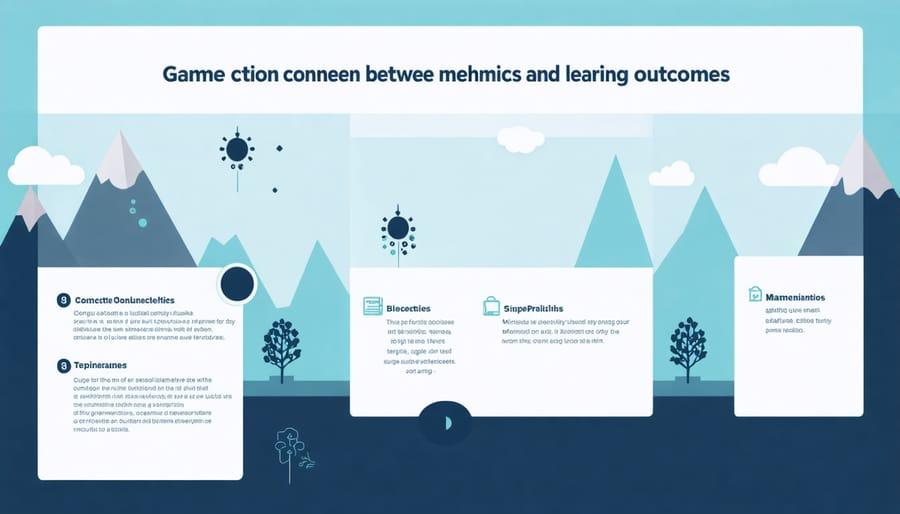How Game-Based Learning Transforms Classrooms: Student Feedback and Impact Explained
Introduction to Game-based Learning in Modern Classrooms
The landscape of education is rapidly evolving, and game-based learning is at the forefront of this transformation. By integrating digital games and playful strategies into the curriculum,educators are unlocking new ways to deliver knowlege,boost engagement,and deepen understanding. But how does this educational trend actually impact students and classrooms? This article explores the powerful ways game-based learning is reshaping education, unpacks real student feedback, and delves into the measurable impact on learning outcomes.
What is game-Based Learning?
Game-based learning (GBL) is an instructional strategy that uses games—both digital and physical—as the primary medium for teaching and learning. Unlike traditional teaching methods, GBL places students at the center, encouraging them to learn by doing, experimenting, and collaborating in interactive environments. Whether thru educational video games, classroom simulations, or playful problem-solving activities, game-based learning is proven to make content more relatable and memorable.
The Core Benefits of Game-based Learning
- Enhanced Engagement: Games make learning feel more like play, capturing students’ attention and motivating them to persist through challenges.
- Improved Knowledge Retention: learners remember more when they actively apply new concepts in immersive, hands-on activities.
- Development of Critical 21st Century Skills: Collaboration, problem-solving, creativity, and digital literacy are fostered through game-based environments.
- Safe Learning Spaces: Games provide low-risk opportunities for students to experiment, make mistakes, and learn from feedback.
- Personalized Learning Paths: Many educational games adapt to individual student needs, offering tailored challenges and pacing.
- Real-time Assessment and Feedback: Teachers receive instant insights into student progress, allowing for timely support and adjustments.
Student Feedback: First-Hand Experiences
To better understand the true impact of game-based learning in classrooms, it is essential to listen to students themselves. Here are a few illustrative responses from students who have experienced game-based learning firsthand:
- “Math used to be boring, but now I actually look forward to our lessons. Competing with my classmates in friendly math challenges makes everything more exciting.” — Jordan,Grade 5
- “I love the science simulation games. They help me see how things work instead of just reading about them in a book.” — Sophia,Grade 8
- “I feel less afraid to try and fail during learning games,because I know I can always try again and improve.” — Aiden, grade 7
- “The group games taught me how crucial teamwork is. We all have to collaborate to solve the puzzles.” — Emily, Grade 6
Measured Impact: case Studies and Research Findings
Numerous studies and case reports substantiate the transformative effects of game-based learning across grade levels and subject areas.
Case study 1: Improved Math Performance with Digital games
A 2023 research study conducted across several elementary schools implemented “MathQuest,” a digital math game, for six months. Findings revealed:
-
Average math scores increased by 23% in participating classrooms compared to traditional instruction.
-
Students reported higher levels of confidence and motivation to tackle challenging math problems.
Case Study 2: Enhanced Collaboration and Critical Thinking
middle-school students engaged in “EcoBuilders,” a team-based sustainability game, exhibited:
-
Significant growth in teamwork and dialog skills.
-
A 35% rise in creative problem-solving scores after a semester of regular play.
Supporting Research
According to the Edutopia Foundation, game-based learning is especially effective for fostering deep conceptual understanding and long-term engagement in STEM subjects.
Tips for Integrating Game-Based Learning in Your classroom
Ready to bring the benefits of game-based learning to your students? Here’s how to get started and maximize effectiveness:
- Start Small: Incorporate short, targeted games to introduce or reinforce specific concepts before moving to larger, ongoing projects.
- Align with Learning Objectives: Choose or design games that directly support your curriculum and desired learning outcomes.
- Encourage Collaboration: Select activities that foster teamwork, communication, and collective problem-solving.
- Measure Progress: Use games that provide analytics or grading features to monitor student growth and identify learning gaps.
- gather and Apply Feedback: Regularly ask students what they enjoy, what challenges them, and how games can be improved for more meaningful learning.
- Balance Screen Time: Blend digital and physical games to promote diverse learning experiences and minimize screen fatigue.
Best Practices for Maximizing the Impact of Game-Based Learning
- diversify Game Types: Use a mix of competitive, cooperative, and individual games to cater to different learning styles.
- Facilitate Reflection: Dedicate time after games for students to discuss strategies, lessons, and applications to real-world scenarios.
- Integrate Assessment: Leverage in-game feedback and traditional assessments to track student progress.
- Maintain Accessibility: Ensure all students, including those with special needs, can fully participate by providing options for gameplay.
conclusion: Game-Based Learning—A Transformative Classroom Ally
Game-based learning has proven itself as a catalyst for engagement, deeper learning, and the development of essential skills for the 21st century. By integrating thoughtful, curriculum-aligned gaming experiences, educators can revolutionize their classrooms—empowering students to become more curious, resilient, and collaborative learners. the positive student feedback and compelling research findings highlighted in this article offer a roadmap for schools and teachers eager to embrace this innovative educational methodology. Start small, iterate based on feedback, and watch as your classroom transforms into a dynamic hub for exploration and growth.
For further resources and inspiration on implementing game-based learning in your classroom, consider exploring expertly curated platforms and joining educator communities advancing the future of interactive education.

